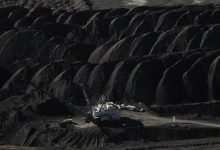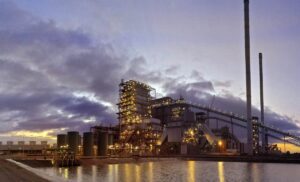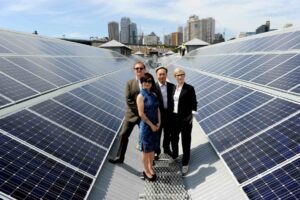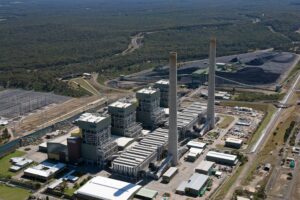Australia has been left in the dark about the scale of methane pollution being emitted by our energy sector, and unfortunately, the safeguard mechanism does little to pull back the curtains.
Whenever you dig for coal, methane is released. We’re not talking about once the coal has been burnt, we mean when you begin digging it up.
In 2019, Australia’s coal companies reported that the methane released from their mines alone, had a bigger climate impact than all of Australia’s cars that year.
That’s partly because methane is over 80 times more powerful at heating the planet than carbon dioxide in its first 20 years. What’s worse, is that these coal mine methane emissions reports are likely underestimating the problem.
Earlier this year, the IEA estimated that Australian coal mines are under-estimating their methane emissions by 60%.
This under-estimation is a direct result of outdated legislation. Underground and surface coal mines report their methane emissions to the Clean Energy Regulator differently under the National Greenhouse and Energy Reporting (NGER) scheme.
For example, surface mines, which are the majority of Australia’s coal mines, do not even require onsite measurement and instead rely on outdated and standardised “emissions factors” to guess how much methane is being emitted.
Unfortunately, this all means that Australian regulators are currently left in the dark about the scale of the problem, allowing the coal sector to pollute with impunity.
In the lead-up to the latest round of negotiations, the Senate Inquiry into the safeguard mechanism was a brief moment of clarity on industrial methane. They recognised the “massive climate harm” of methane emissions from the fossil fuel sector and highlighted that 40% of Australia’s methane comes from coal and gas mining.
However, while the Inquiry recognised that the current state of methane underreporting was “too compelling to ignore”, they failed to make a clear recommendation to act on this, or how the safeguard mechanism should deal with these emissions once reporting issues were resolved.
Unfortunately, that gap between what we know, and what we’re willing to do, has remained a painful trend in the negotiations on methane regulation.
Over the last few weeks, there have been a swathe of voices that have spoken out about Australia’s industrial methane challenge. This includes powerful statements from Teal independents and David Pocock who have recognised from the beginning that you can’t use carbon offsets to compensate for methane emissions. They are just too different.
Also at play have been 3 different technical assessments, all covered by RenewEconomy, looking into whether or not the safeguard mechanism would be able to deal with the super-heating climate impacts of industrial methane emissions.
And while the latest news around the updates to the safeguard mechanism include important references to improving methane measurement, and applying “international best practice”, the current framework does not directly incentivise onsite methane mitigation at coal mines, nor does it compel any shift in our outdated monitoring standards.
The unfortunate irony of the phrase “international best practice”, touted at press conferences over the last 24 hours, is that an important international best practice measure was already handed to the government, and seemingly overlooked.
Early in the Safeguard negotiations, Zali Steggall MP suggested that methane intensity targets could be integrated into the safeguard mechanism as an additional requirement on major coal and gas projects.
These would act as caps on the amount of methane emissions permitted per tonne of coal or kilojoule of gas, and are already recognised as international best practices within the EU and Colorado.
If methane intensity targets were introduced to the safeguard mechanism, as suggested by Zali Stegall, Ember estimates that not only could those caps have been met with ready-to-go technology, but that for coal mines alone, it could reduce an additional 29 million tonnes of CO2-e by 2030.
That would have the same climate impact as stopping every plane in this country for five years.
These measures, whether in the form of methane intensity targets or other incentives, would also be technically and economically feasible, especially for the coal sector. In fact, we believe that coal mine methane could be one of the greatest untapped opportunities for Australia’s climate regulators over the next 3-5 years.
In their Global Methane Assessment the Climate and Clean Air Coalition found that coal miners have ‘ready to go’ technologies that are some of the cheapest methane mitigation options available. Using these figures, we estimate that the coal sector could halve its methane emissions for just 1% of its annual profits, and could begin cutting its methane emissions at about one quarter the price that it will cost our farmers.
There will be further opportunities to review the way methane is currently being measured and what can be done under the safeguard mechanism. But, methane in particular is a greenhouse gas that doesn’t reward those who wait.
The next 20 years are absolutely critical for the climate, and every tonne of methane released will heat the planet more than 80 times worse than carbon dioxide over that same time.
The safeguard mechanism is an important step forward, but it was also a missed opportunity to deal with Australia’s growing coal mine methane problem.
Annika Reynolds is climate policy advisor at climate think thank Ember. Chris Wright is a climate strategy advisor at Ember.








